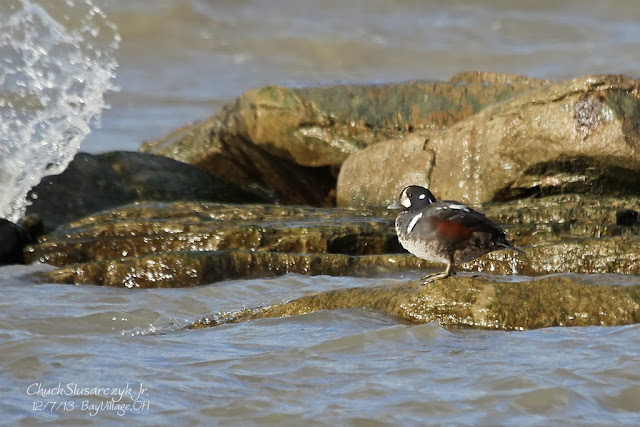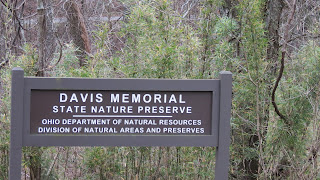It is not quite a scary as it sounds, we only "killed" invasive honeysuckle plants. The grilling followed. It was a combined service project for some bio students from Wilmington College and the fabulous Cincinnati Wild Ones!
Ellen -the only student's name I successfully remembered- and some fellow students really went to work on the Caesar Creek Gorge invasive honeysuckle. They were an amazing team.
The guys were cutting and treating the stumps with chemicals like old pros!
The chemical treatment had a blue dye in it, so we could tell what we were spraying. The ultimate goal is to treat only the stumps and not a lot of the surrounding vegetation.
 |
| Christine Hadley and Jim Mason |
Thanks to some professional help and backing by the Cincinnati Native Plant Society, the tools and chemicals were provided by Jim Mason with help by Christine Hadley.
I guess I have failed blogging 101, because I did not get good ID photos of honeysuckle or the piles of the plant cuttings we left behind. All I can say, I was impressed. They students pitched in and did a mountain of good work, and were some of the nicest and most intelligent kids you could ever want to meet.
The "grill" portion held at the shelter house followed the morning "kill".
These fellows dove right in. I can assure you the food was great!
 |
| Debi Wolterman |
Here is the dynamo that organized the event, Debi Wolterman. Thanks to her, the native plants at Caesar Creek have a little more elbow room to grow, now that the invasives have been removed.
 |
Chris McCullough, Sandy Seiwert , and Barb Stiglar
|
The food was prepared by the members of the Cincinnati Wild Ones. We sure appreciated all they did, too!
Cincinnati Wild Ones is an extraordinarily active group who have hosted many educational events as well as the
Midwest Native Plant Conference.
Special thanks to Kathy McDonald and Ned Keller for inviting me along!
We are excited to see similar events spreading across the state! What area would you like to see rid of invasive plants? Another event is scheduled for November 2nd, 2013. See the details below.
____________________________________________________________
Please contact
Christine Hadley, president of the Cincinnati Wild Flower Preservation Society
(founded in 1917 by Lucy Braun), at 513-850-9585 or email christinehadley@earthlink.net for information (See the list
of volunteer tasks below.)
Volunteers needed for
this day are:
*
Crew Leaders for
honeysuckle removal teams
*
Honeysuckle Cutters:
(Loppers, bow saws, non-power equipment)
*
Chain Saw Operators
(must be pre-registered)
*
Steel Blade Trimmer
Operators
*
Cut Stump Treatment
(using spray bottles)
*
Registration: meet and
greet participants
*
Lunch Crew: setting up
tables and chairs, minimal food prep
*
Couriers: taking teams
to their worksites
*
Plant ID: botanists
and other knowledgeable volunteers to help cutters ID invasives and avoid
cutting desirable plants, i.e. hydrangea, blue ash, spice bush,
etc.
*
Rock Outcrop
Specialists: volunteers with the agility to easily maneuver the rocks in the
gorge to cut and treat woody invasives in, on and around the rocks. (Most areas
are much easier to work than the rock outcrop
areas.)
Bring your favorite
tools of the trade: gloves, pruners, loppers, saws, trimmers and protective gear
for power equipment. We will have tools and safety equipment for all those new
to the volunteer effort conquering the alien, invasive, amur (bush) honeysuckle.
Spray bottles and gloves for cut stump treatment will be
furnished.
There will be an area
available for your organization’s table display and
literature.
Directions: Clifton Gorge SNP is
located in Greene County on State Route 343, 3 miles east of Yellow Springs and
0.25 mile west of Clifton at the east end of John Bryan State Park.








































+Shelly+and+Mark+pre-race.JPG)









